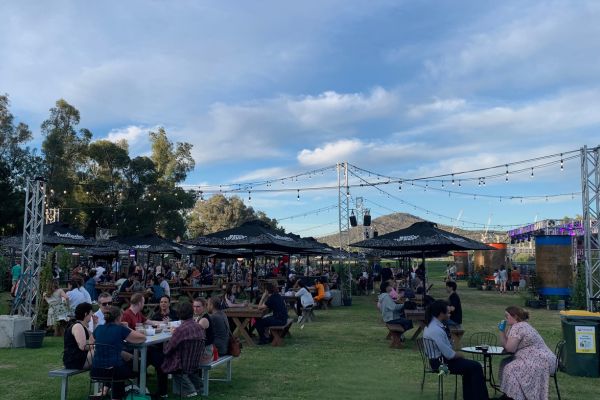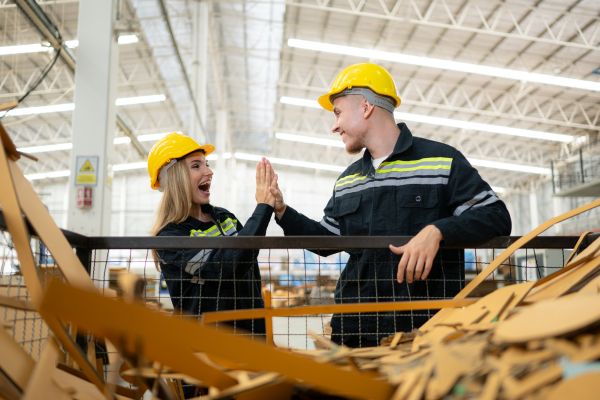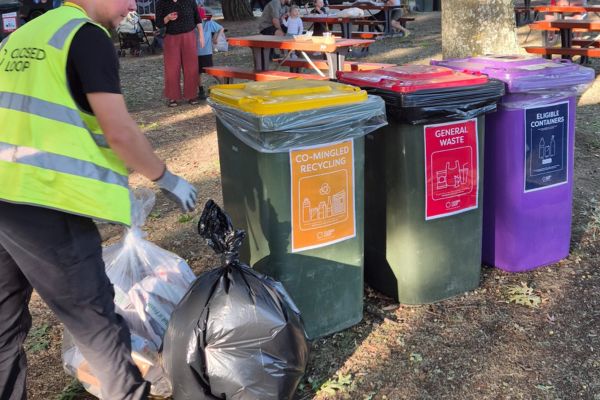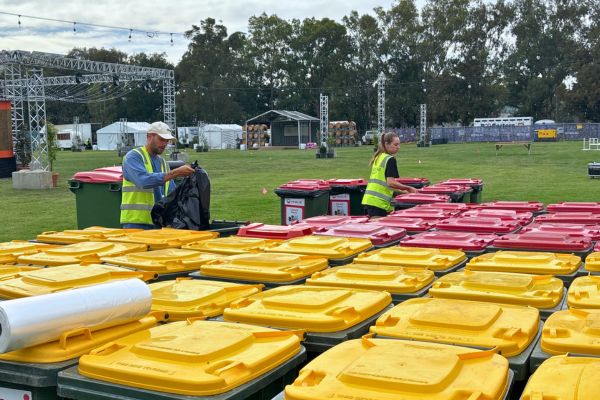How to control inputs and outputs for a sustainable event or venue
At Closed Loop, one of the most prominent ways we ensure an event or venue’s waste management is as sustainable as possible is by working with the management team to control the inputs and, subsequently, the waste output at every event. Below, we outline some of our strategies for ensuring that the materials and resources brought into and the waste generated at events are managed smoothly, sustainably, and with as much waste diverted from landfills as possible.
Controlling inputs: what waste will you create?
The first step in creating a sustainable event is to understand and control the materials and resources that will enter the site. This includes identifying what types of waste might be generated and proactively planning how to manage them. In addition to minimising waste, this also ensures that operations are thoughtful and responsible from the start.
1. Stakeholder collaboration
It’s important to know what vendors, organisers and suppliers will be on-site, what materials they will be using, and how they plan to dispose of them. This includes food and beverage, retail, entertainment, and other event vendors. Understanding the materials and waste generated by each helps to ensure that the right sustainable practices are in place.
Part of this process includes working with each vendor to ensure proper disposal bins and streams are ready for them. Where possible, we also advise vendors on best practices for materials. For instance, when collaborating with food and beverage vendors, we offer a vendor packaging framework that provides guidelines for sustainable packaging choices to ensure as much packaging is captured for recycling instead of sent to landfill.

2. Identifying waste streams
A key component of reducing waste is identifying the waste streams that will be generated. This is where collaboration with stakeholders becomes essential. By understanding unique requirements and what materials each stakeholder will bring, use, and dispose of, you can plan ahead to ensure the proper waste management strategies are in place. For example:
- Food festivals: Focus on managing food waste and food packaging with recycling and composting.
- Garden and flower shows: Plan for the disposal of garden and landscaping waste like plant material, organic matter and rubble.
- Car sporting events: Be prepared for the handling of hazardous materials such as engine oil and car batteries.
- Mass-participant sporting events (e.g., Marathons, Triathlons): Common waste includes paper cups and food waste, which we work to recycle through programs like Simply Cups. Additionally, we collaborate with local charities to donate excess food.
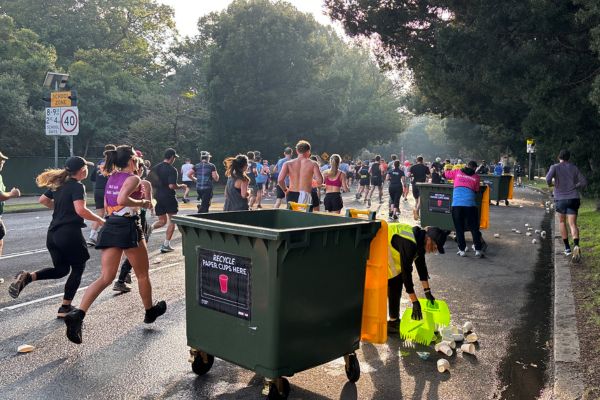
3. Attendee education
Attendees are often the largest source of waste that is not directly within the control of the organisers. That’s why events and venues should provide clear communication of sustainability goals to the public. A great way to do this is by sending out pre-event communication, which encourages attendees to bring their own reusable options, like water bottles and coffee cups. This can be in the form of emails, text messages or inclusion in any briefing packs and brochures that get sent to attendees.
When attendees are informed and engaged, it not only enhances the event’s sustainability but also boosts their excitement and participation in the process.

4. Reducing waste before its created
Reduce waste before it’s created is also a huge part of controlling your inputs. Below are some examples:
- Reducing single-use plastic water bottles by providing refill stations and remind consumers to bring their own water bottles.
- Reducing food waste by providing food vendors with data from previous years, encouraging food vendors to be stricter with portion control or to donate excess food waste.
- Encourage events to go digital. E-tickets, digital maps, and e-gift cards or discount codes reduce paper waste significantly.
- Design signage made from materials like fabric, metal, or sturdy plastic that can be reused for multiple years.
Controlling outputs: managing and maximising resources
While controlling inputs is important, it’s just as crucial to have a strong plan for managing and recovering waste generated at events. Here’s how we approach waste management:
1. Hand-sorting for maximum results
We place strong emphasis on hand-sorting as a critical part of our waste management strategy. Having trained teams manually sort through materials after the event ensures that no recoverable materials are accidentally overlooked.
By carefully reviewing and sorting materials, we can catch mis-sorted recyclables or compostables that may have ended up in the wrong bin. This proactive step maximises waste recovery and minimises the risk of sending valuable materials to the landfill.
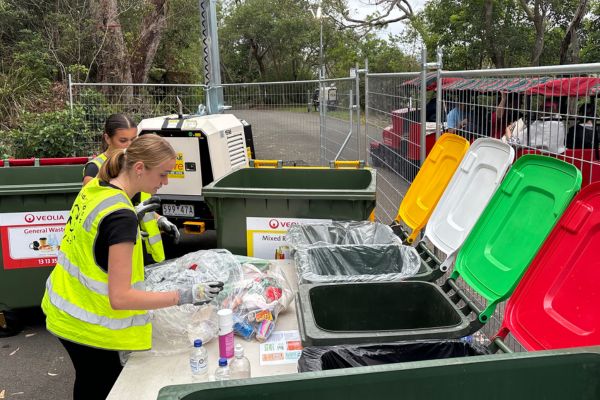
2. Separation of waste at the source
To support and make resource recovery easier, we also ensure proper waste sorting infrastructure are in place so attendees and vendors can easily separate materials correctly from the start.
- Proper bin placement: We ensure waste bins are placed in strategic, convenient locations. For example, bins should be near food stations and high traffic locations.
- Clear signage: Ensure the bins are clearly labelled with easy-to-understand instructions to help attendees dispose of their waste correctly.
- Engage with vendors: Working closely with vendors to ensure they have the proper containers for waste that needs special handling.
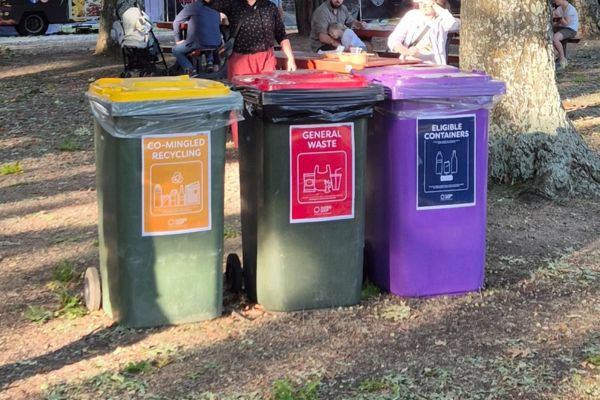
3. Ongoing evaluation and continuous improvement
We are committed to continuous improvement in our waste management practices. This means regularly checking throughout the event to ensure that all waste streams are being properly sorted and that no waste is being overlooked.
If we identify any gaps or missed streams during the event, we quickly put systems in place to address them, ensuring that all materials that can be are recycled, composted or repurposed, rather than ending up in the landfill. This process of constant evaluation and adjustment ensures that we continuously improve waste diversion rates and reduce environmental impact with each event.
A complete approach to sustainability
By controlling both inputs and outputs, we can reduce waste, promote recycling, and minimise the overall environmental footprint.
At Closed Loop, we’re committed to making sustainability the norm, not the exception. Let’s work together to create events that set a new standard for environmental responsibility.




